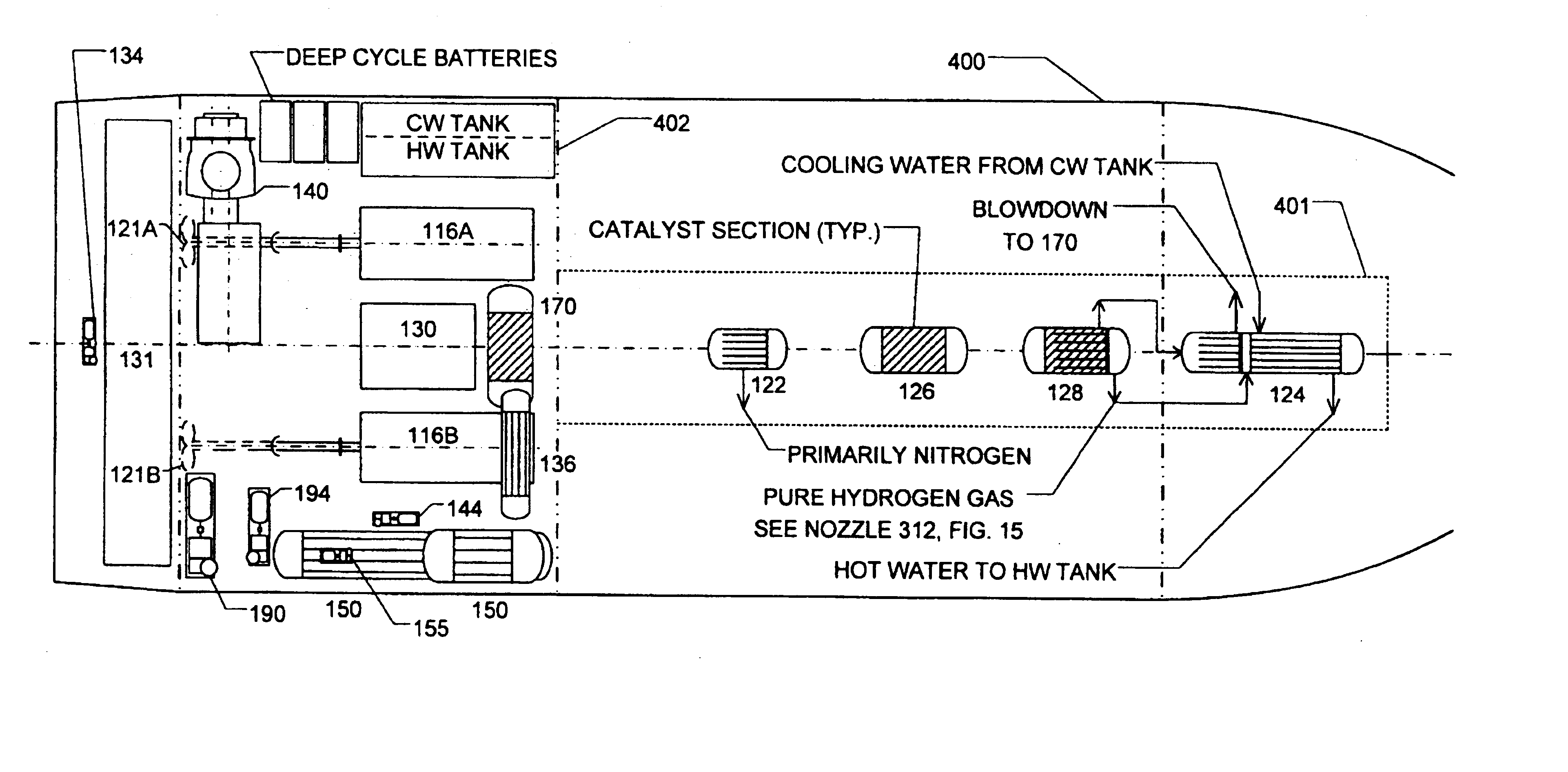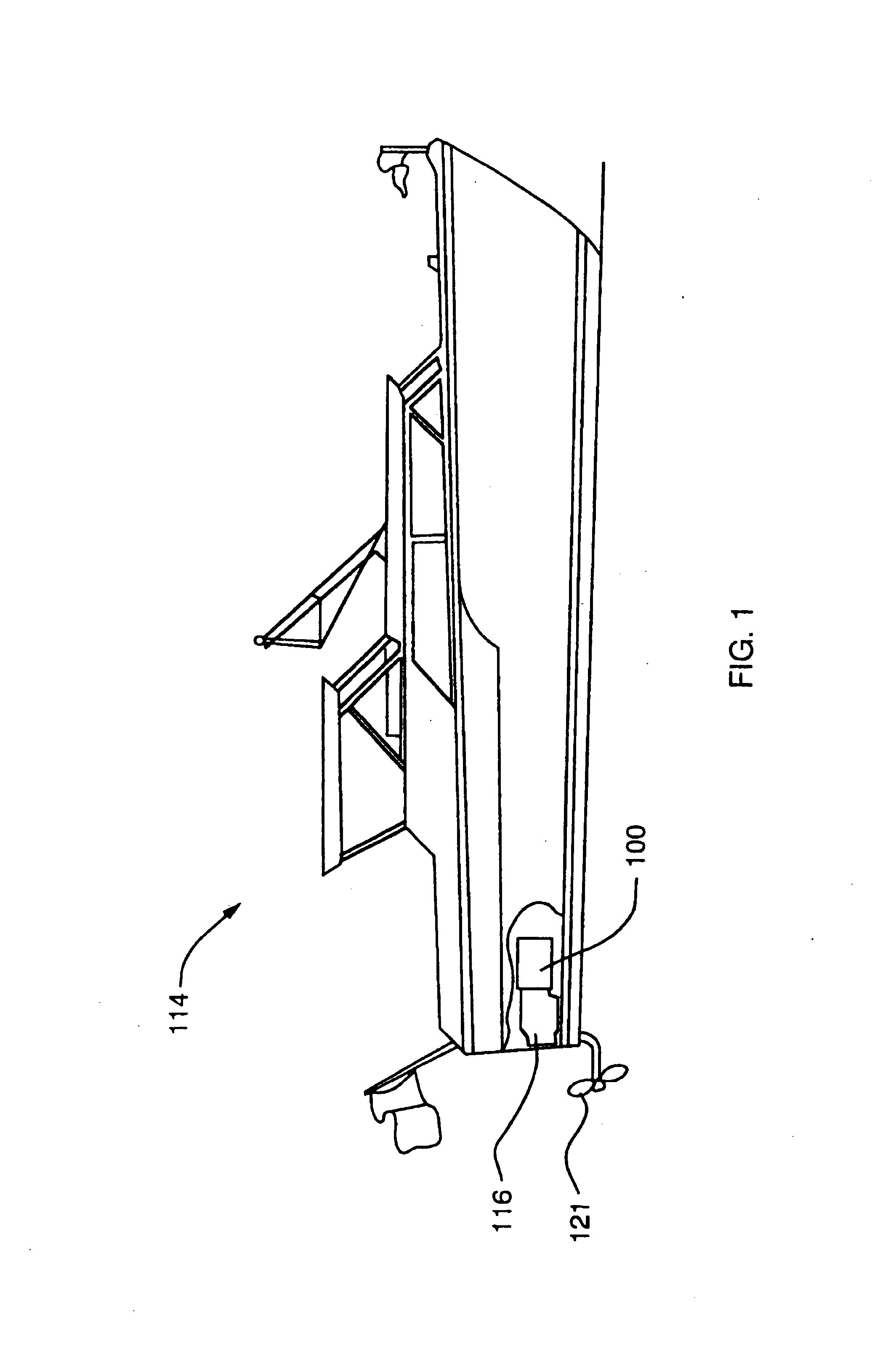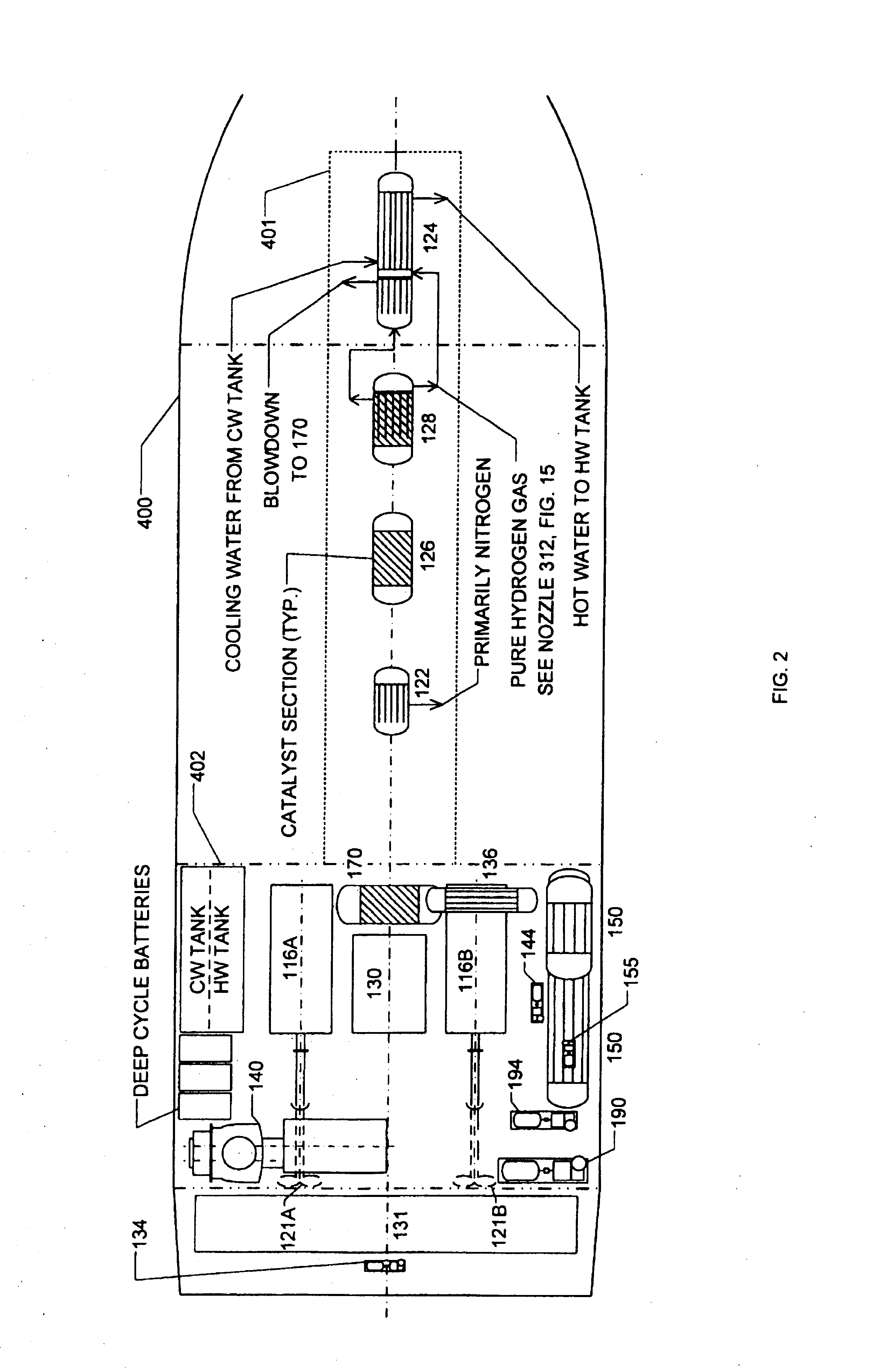Fuel cell system with integrated fuel processor
a fuel cell and processor technology, applied in the field of fuel cell systems, can solve the problems of moderate challenges and fallen out of favor as a primary source of fuel, and achieve the effects of maximizing heat utilization, minimizing heat collection, storage and distribution systems, and minimizing catalyst or other components
- Summary
- Abstract
- Description
- Claims
- Application Information
AI Technical Summary
Benefits of technology
Problems solved by technology
Method used
Image
Examples
first embodiment
[0033] the fuel processor / fuel cell system 100 of the present invention for use in a marine vessel of relatively substantial size and a biofuel as a fuel source is shown structurally in FIG. 2 and schematically in FIG. 3 comprising FIGS. 3A and 3B. The fuel processor / fuel cell system 100 is configured and arranged to fit within the boundaries defined by the vessel. In particular, by the hull 400, a first structural stringer 401 beneath a cabin sole, a first bulkhead 402 separating the vessel's engine room from its cabin, one or more engine room structural stringers represented by second structural stringer 403 within the engine room, and a second bulkhead 404 separating the vessel's engine room from its fuel tank space. The fuel processor / fuel cell system 100 includes as primary components an oxygen membrane separator 122, a hydrogen membrane separator 124, an auto-thermal reactor 126, a water-gas shift reactor 128, and a fuel cell 130. The operation of the fuel cell 130 produces el...
second embodiment
[0044] the present invention is represented by FIGS. 4-5B, in which the fuel source is a sulfur-bearing petrodiesel fuel such as JP-8. In this embodiment, most primary components are configured, arranged and function in the manner described with respect to FIGS. 2-3B. However, in order to provide suitable efficiencies, optional sulfur guard bed 127 may be deployed to avoid poisoning the catalysts in reformer 126, water gas shift reactor 128, and fuel cell 130. The sulfur guard bed 127 operates to capture hydrogen sulfide from the sulfur-containing petrodiesel fuel by reacting the sulfur with hydrogen supplied from other components of the system. It is positioned between the output of the heat exchanger 136 at Stream 3A and as a partial introduction to Stream 6 feeding the auto-thermal reactor 126. Further, in this embodiment of the invention, the fuel cell hydrogen of Stream 19 is split into two streams; a minor stream through ducting represented by Stream 25 is redirected to the su...
third embodiment
[0045] the present invention is represented in FIGS. 6-7B, in which a biofuel is the fuel source, but the optional oxygen permeable membrane 122 is not used. This embodiment of the invention is substantially the same as the embodiment represented in FIGS. 2-3B. It is to be noted that while the embodiment of the invention represented in FIGS. 2-3B may produce the most effective fuel processor / fuel cell system, the embodiment of the invention represented in FIGS. 6-7B is also substantially effective. However, in this arrangement, air from compressor 140 is directed directly through Stream 20B to Stream 6 for introduction to the auto-thermal reactor 126, rather than introducing relatively pure oxygen thereto.
PUM
| Property | Measurement | Unit |
|---|---|---|
| concentration | aaaaa | aaaaa |
| area | aaaaa | aaaaa |
| activation energies | aaaaa | aaaaa |
Abstract
Description
Claims
Application Information
 Login to View More
Login to View More - R&D
- Intellectual Property
- Life Sciences
- Materials
- Tech Scout
- Unparalleled Data Quality
- Higher Quality Content
- 60% Fewer Hallucinations
Browse by: Latest US Patents, China's latest patents, Technical Efficacy Thesaurus, Application Domain, Technology Topic, Popular Technical Reports.
© 2025 PatSnap. All rights reserved.Legal|Privacy policy|Modern Slavery Act Transparency Statement|Sitemap|About US| Contact US: help@patsnap.com



